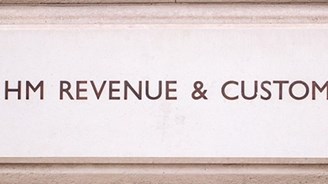Off-payroll Working In The Public Sector - Reform Of The IR35 Legislation

Blog post updated on 29 March 2017 12:15PM.
For many years it has been clear that IR35 doesn't really work. In the first major change to the rules since their introduction, from April 2017 individuals working through their own company in the public sector will no longer be responsible for deciding whether the intermediaries' (IR35) legislation applies but rather the public sector employer, agency, or third party that pays the worker's intermediary will be responsible.
The employer, agency or third party will have to decide if the rules apply to a contract and, if so, account for and pay the liabilities through RTI and deduct the relevant tax and NIC.
The new rules apply to the provision of services to a public authority through an intermediary. The new rules do not affect the Managed Service Company or agency rules. They apply to deemed direct payments treated as made on or after 6 April 2017, even if relating to services provided before that date.
HMRC guidance indicates that public sector means organisations that are Public Authorities for the purposes of the Freedom of Information Act 2000 and Freedom of Information Act (Scotland) 2002 and includes Government departments, legislative bodies, the armed forces, local government, the NHS, schools, the police and the BBC.
Conditions of liability
The new rules apply where:
- an individual (the worker) personally performs, or is under an obligation personally to perform, services for another person (the client);
- the client is a public authority;
- the services are provided not under a contract directly between the client and the worker but under arrangements involving a third party (the intermediary); and
- the circumstances are such that if the services were provided under a contract directly between the client and the worker, the worker would be regarded as an employee or office-holder of the client or the worker is an office-holder who holds that office under the client and the services relate to the office.
It is the public authority which needs to decide if the rules apply.
Worker treated as receiving earnings from employment
If one of Conditions A to C is met, there is a requirement to identify the chain of two or more persons where the highest person in the chain is the client, the lowest person in the chain is the intermediary and each person in the chain above the lowest makes a chain payment to the person immediately below them in the chain.
Conditions A to C are essentially the same as the IR35 rules and apply where the intermediary or partnership is controlled by the worker and/or their associates.
In the simplest case, the public authority is the client and the lowest in the chain above the intermediary (eg a one person company). The public authority will therefore be the fee payer.
Where an agency is involved, it is the agency paying the intermediary which will be the fee payer.
The fee-payer is treated as making a payment to the worker which is to be treated as earnings (the deemed direct payment) but this is subject to special rules for non-resident fee payers.
The deemed direct payment is treated as made at the same time as the chain payment made by the fee-payer. The important points to appreciate are that:
- the worker will be treated in tax terms as an employee of the entity that pays the intermediary
- the fee-payer will deduct PAYE and employee NICs from the deemed payment and pay over those amounts, together with employer NICs to HMRC
- the worker will be treated as having received the net deemed payment irrespective of whether he has received it.
The deemed direct payment
Where the new rules apply the deemed direct payment is calculated using the following four steps:
Step 1 - Identify the amount or value of the chain payment made by the person who is treated as making the deemed direct payment and deduct from it any VAT.
Step 2 - Deduct any amount which represents the direct cost to any person of materials used, or to be used, in the performance of the services.
Step 3 - Deduct any amount which represents expenses met by the intermediary that would have been deductible from the taxable earnings from the employment if the worker had been employed by the client and the expenses had been met by the worker out of those earnings.
Step 4 - Any remaining positive figure is the deemed direct payment.
The reference above to expenses met by the intermediary includes expenses met by the worker and reimbursed by the intermediary and, where the intermediary is a partnership and the worker is a member of the partnership, expenses met by the worker for and on behalf of the partnership.
Effect on the intermediary
The worker's intermediary will for tax purposes record its taxable income as the amount of the deemed payment less PAYE and NICs deducted. To avoid double taxation the intermediary will get relief from tax but only to the extent it distributes the net deemed payment to the worker.
HMRC have issued guidance on the rules and an 'Employment Status Service tool' has been released here to help in the decision-making process. Clearly, this change may have a significant effect on certain client's businesses and they will benefit from the advice you can give them. To help you in that process we have:
- produced a client letter and
- a webinar which examines the new rules in detail but will also consider the wider issue of service companies in relation to IR35, the agency and also the managed service company rules.
* Following the Finance Bill, we updated this blog post on 29 March 2017 12:15PM.



